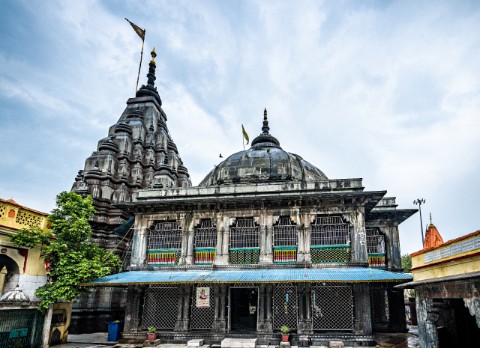Gaya is a city of Gaya district and Magadh part of the Indian state of Bihar. It is a city of ancient importance and is one of the major tourist attractions in India. History of Gaya have significant role in the modeling of todays India. It have religious significance to Hindu, Jainism and Buddhism. Gaya district is mentioned in the great epics, the Ramayana and the Mahabharata.
Gaya in Religious Texts
The origin of the name ‘Gaya’, as referred to in Vayu Purana, is that Gaya was the name of a demon (Asura) whose body was divine after he did rigid penance and secured blessings from Vishnu. It was said that Gayasura’s body would continue to be known as Gaya Kshetra.
Vishnupad Temple is one of the ancient and most famous Hindu temples dedicated to Lord Vishnu. It is located in Gaya, Bihar, India on the bank of the river Phalgu, marked by a footprint of Lord Vishnu called Dharmsila, carved into a block of basalt.
Gaya was a place of pilgrimage for people from around the world. The place of ancient Gaya received from the account in the Ramayana of the god Rama coming here to the banks of Phalgu River (called the Niranjana), accompanied by his wife and younger brother, to offer pind-daan for their father Dasharatha, for the moksha of his soul. In the Mahabharata, Gaya is referred to as Gayapuri.
Gaya in Ancient India
In Buddhist documented history in the 6th century BCE, Gautama Buddha attained enlightenment at Bodh Gaya, 16 km (9.9 mi) from the modern city, and became the Buddha.
Gaya grew in the Maurya Empire (321–187 BCE), which ruled from the city of Pataliputra (near to modern Patna) over an area that spread beyond the Indian subcontinent. During this period, Gaya saw the rise and fall of many dynasties in the Magadha region, where it occupied an important place in cultural history over some 2,400 years between the 6th century BCE and the 18th century CE.
The city’s social significance began with the dynasty founded by Sisunaga, who exercised power over Patna and Gaya around 600 BCE. Bimbisara, the fifth king of the dynasty, who lived and ruled around 519 BCE, had projected Gaya to the outer world. The area experienced the influence of Gautama Buddha and Bhagwan Mahavir during the reign of Bimbisara.
During the Nanda dynasty (345–321 BCE), Gaya and the entire Magadha region came under Mauryan rule. Mauryan Emperor Ashoka (272–232 BCE) contained and supported Buddhism. He visited Gaya and built the first temple at Bodh Gaya to commemorate the Buddha’s attainment of supreme enlightenment.
The period of Hindu revivalism began with the Gupta Empire during the 4th and 5th centuries CE. Samudragupta of Magadha brought Gaya into the limelight, giving it the capital of Bihar district during the Gupta empire.
In 750 CE, Gaya became a part of the Pala Empire, under the rule of its founder, Gopala. It is believed that the present temple of Bodh Gaya was built during the reign of Gopala’s son, Dharmapala.
Gaya in Medieval India
In the 12th century CE, Gaya was attacked by Muhammad Bakhtiyar Khilji of the Ghaznavid Empire. By 1557, it had become part of the Mughal Empire, and remained under its power until the Battle of Buxar and the beginning of British rule in 1764. Gaya, along with other parts of the country, gained its independence in 1947.
Gaya in Modern India
As attested by Francis Buchanan-Hamilton in the early nineteenth century, the city was divided into two areas: a sacred area in the southern part of the city, called Gaya; and the larger secular area, which may have been known by the Muslim community as Allahabad.
During the British rule, the commercial and administrative area of the secular zone was formally named Saheb Ganj by British policy reformer Thomas Law, who was a district officer in Gaya in the late nineteenth century.
Gaya in Indian National Movement
Swami Sahajanand Saraswati, the founder of the All India Kisan Sabha peasant movement in 1936, established an ashram at Neyamatpur, Gaya, which later became the center of the freedom struggle in Bihar. Many prominent leaders of the Indian National Congress visited frequently to meet Yadunandan (Jadunandan) Sharma when he was the leader of Kisan Sabha, residing in the ashram set up by Swamiji. Yadunandan Sharma became the leader of the peasants of Gaya district and second-in-command to Swami Sahajanand Saraswati.
Gaya played a significant role in the Indian Independence Movement. From 26 to 31 December 1922, the 37th session of the Indian National Congress was held in Gaya under the presidency of Deshbandhu Chittaranjan Das. It was attended by prominent leaders and luminaries of the Independence Movement, including Mohandas K. Gandhi, Dr. Rajendra Prasad, Dr. Anugrah Narayan Sinha, Sardar Patel, Maulana Azad, Jawaharlal Nehru, and Sri Krishna Sinha.
Gaya is the birthplace of eminent nationalist Bihar Vibhuti, Anugrah Narayan Sinha, Bihar’s first deputy Chief Minister, and Finance Minister. Former Bihar Chief Minister Satyendra Narayan Sinha also hailed from Gaya. Ishwar Chaudhary, a member of the Fifth, Sixth, and Ninth Lok Sabhas from 1971 to 1979 and from 1989 to 1991, represented the Gaya constituency of Bihar.



4 thoughts on “History of Gaya – City of Historical Significance”